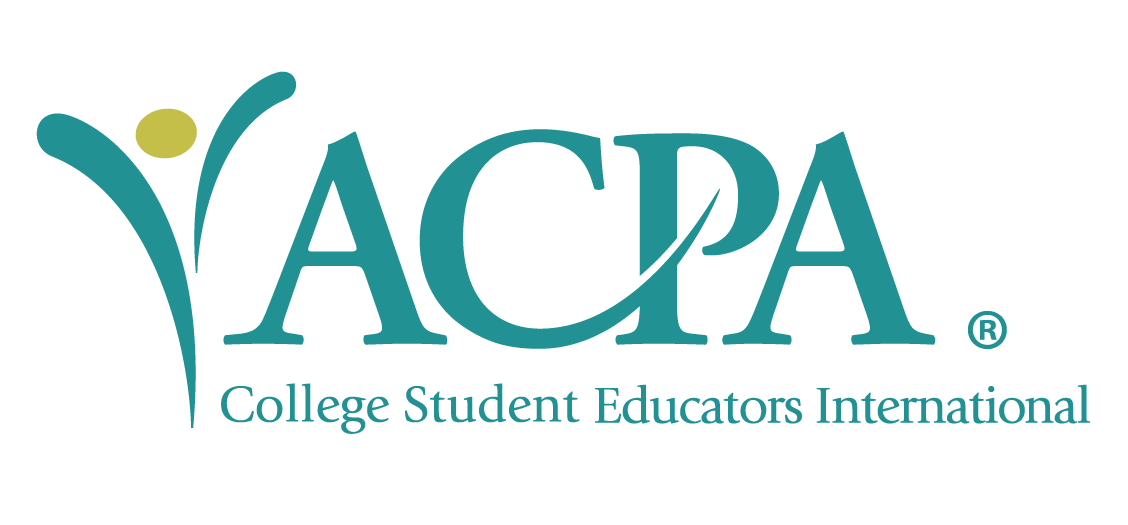Donald “DJ” Mitchell, Jr.
Assistant Professor of Higher Education, Grand Valley State University, Grand Rapids, Michigan
ACPA Emerging Scholar
Do you want students to reach their educational goals? My guess is you answered in the affirmative. Nevertheless, we know there are several students who begin their postsecondary educations but do not finish. According to the National Center for Education Statistics (n.d.) (https://nces.ed.gov/fastfacts/display.asp?id=40), the six-year graduation rate for first-time, full-time undergraduate students who began college the fall of 2007 was 59 percent. That means 41 percent of student who began during the fall of 2007 either dropped out or remained enrolled after six years while pursuing a “four-year degree.” When one disaggregates the overall fall 2007 six-year graduation rate and examines graduation rates for students from marginalized and historically underrepresented populations, the percentage declines more often than not. While there are several reasons for these achievement or opportunity gaps, when students step foot on our campuses, the culture they experience influences whether many students persist toward their educational goals. We all want students to reach their educational goals, therefore, campus climates that prohibit the completion of educational goals are problematic and are antithetical to our aim to help to students.
Intersectionality is a framework that was introduced by Kimberlé Crenshaw in 1989 (http://chicagounbound.uchicago.edu/cgi/viewcontent.cgi?article=1052&context=uclf). Crenshaw, a critical race theorist and legal scholar, used the term intersectionality to highlight the lived experiences of Black women, who because of the intersection of multiple marginalized identities (e.g., race, gender, class, sexual orientation), were and are left out of anti-discrimination laws that often focus on single-axis identities (e.g., just race or just gender). For example, when race is at the forefront of discrimination cases it tends to benefit Black men and when gender is at the forefront it tends to benefit White women, erasing Black women in the process. To broaden its use, I define intersectionality as “the intersection of salient socially constructed identities and the extent to which individuals or groups are oppressed or marginalized as a result of interlocking, socially constructed systems of oppression associated with those identities” Mitchell, 2014, para. 2 (https://www.naspa.org/constituent-groups/posts/projectintersections-post-1).
U.S. higher education institutions were not created for all students. Systems of oppression (e.g., racism, sexism, homophobia, classism, etc.) have shaped higher education and the policies and practices. Although campuses have become more diverse, policy and practices that perpetuate the marginalization of continue to be used. In order for all students to succeed, U.S. higher education’s interlocking systems of oppression must be dismantled. Reflecting on Crenshaw’s articulation of intersectionality suggests we challenge all systems of oppression and their intersections within higher education. To this end, we must foster more socially just campus environments where students are more likely to succeed.
http://videos.myacpa.org/dr-donald-mitchell-race-related-studies-within-journals-of-higher-education
To connect intersectionality to praxis—or using theory to inform practice— consider these questions:
- In what ways does having advising hours only during business hours marginalize some students?
- In what ways do requiring multiple books for a class and the prices of books marginalize some students?
- In what ways do limited or no gender-neutral restrooms marginalize some students?
- In what ways does closing housing during Christian religious holiday breaks marginalize some students?
By continuously reflecting on these critical question, challenging current policies and practices, proposing new policies and practices, and, quite frankly, not accepting the status quo, we can do intersectionality well (Jones, 2014). We can improve the experiences of marginalized college students by working to dismantle interlocking systems of oppression or becoming more truly justice-centered campuses. We must start a revolution whereby all students can reach their educational goals. Challenge the current state of higher education to use intersectionality as a framework to inform and promote student success.
References/Hyperlinks
Crenshaw, K. (1989). Demarginalizing the intersection of race and sex: A Black feminist critique of antidiscrimination doctrine, feminist theory, and antiracist politics. University of Chicago Legal Forum, 139, 139-167.
Jones, S. R. (2014). Foreword. In D. Mitchell, Jr., C. Simmons, & L. Greyerbiehl (Eds.), Intersectionalty & higher education: Theory, research, & praxis (pp. xi-xiv). New York, NY: Peter Lang.
Mitchell, D., Jr. (2014b November 21). Intersectionality to social justice = theory to practice [Web log post]. Retrieved from https://www.naspa.org/constituent-groups/posts/projectintersections-post-1
National Center for Education Statistics, Institute for Educational Statistics. (n.d.). Fast facts. Retrieved from https://nces.ed.gov/fastfacts/display.asp?id=40
http://videos.myacpa.org/dr-donald-mitchell-race-related-studies-within-journals-of-higher-education





Recent Comments